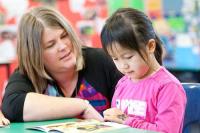Making rhymes and playing with words is one of the most reliable indicators that children are getting control of language. They are becoming aware of words and sounds and can manipulate these to express themselves – and to impress others!
Cunningham, 2005, page 9
Activities such as reading, writing, reciting, singing, and playing word games develop students’ abilities to recognise rhymes and distinguish sounds within words. Such activities, along with the specific suggestions included in Sound Sense, provide many opportunities to monitor students’ developing phonological awareness and confidence with specific aspects of phonics.
Assessment and monitoring opportunities include:
- observation and discussion during reading and writing sessions and when the students are working on independent activities
- analysis of the students’ written work
- analysis of running records
- information from the six-year net in An Observation Survey of Early Literacy Achievement (Clay, 2013)
- occasional simple and specific spelling tests, for example, asking the students to write four words that rhyme with “in”.



